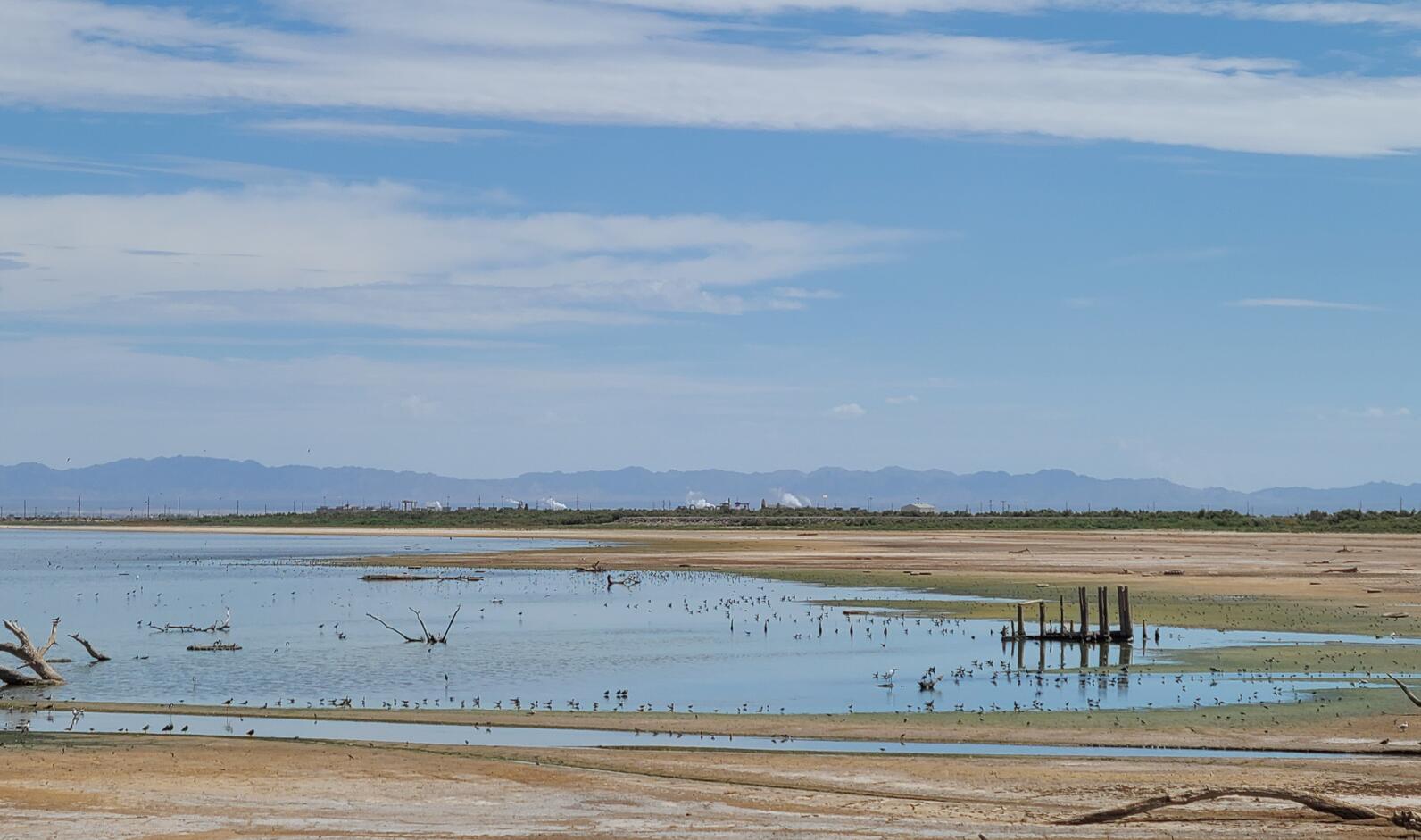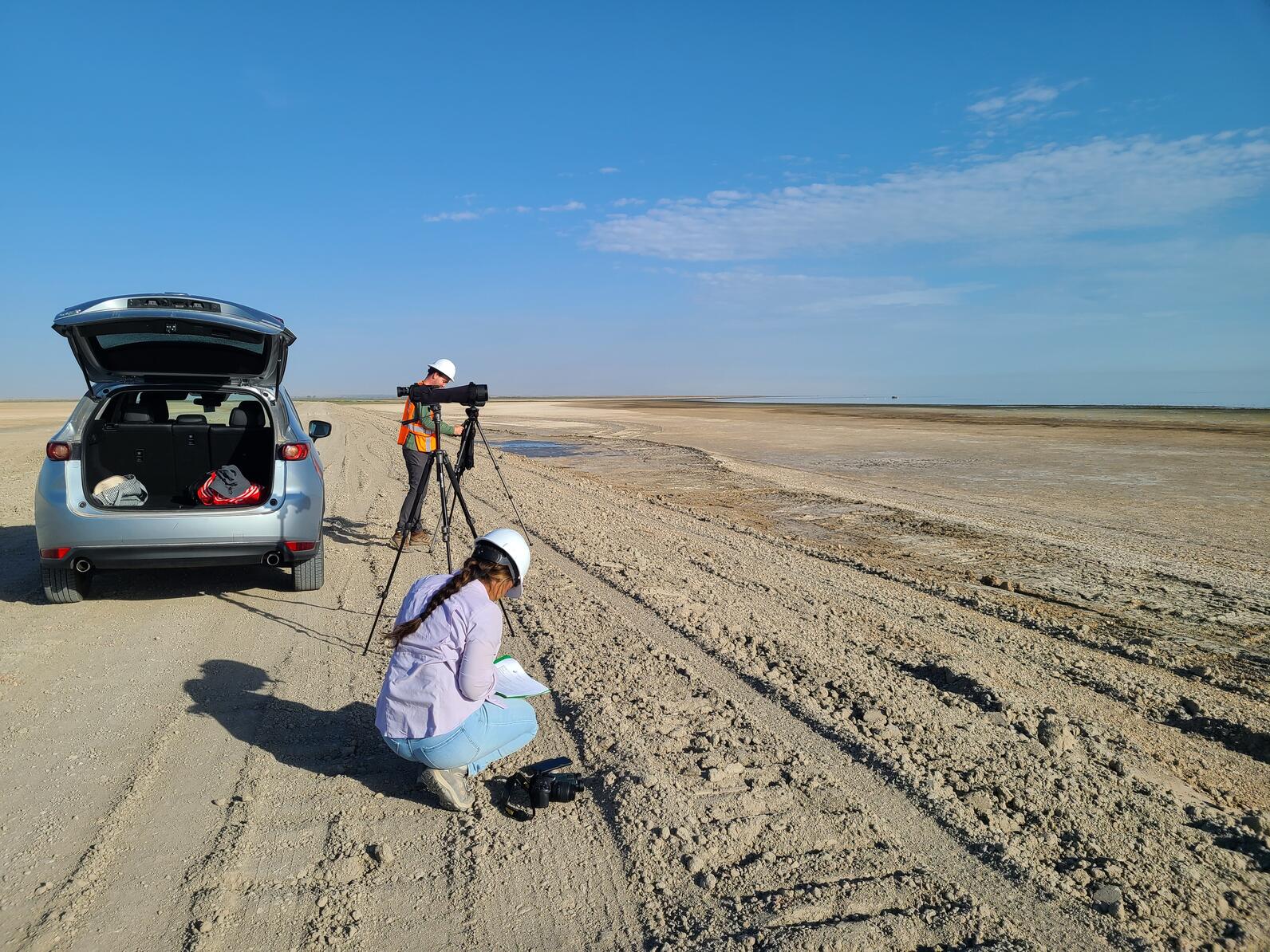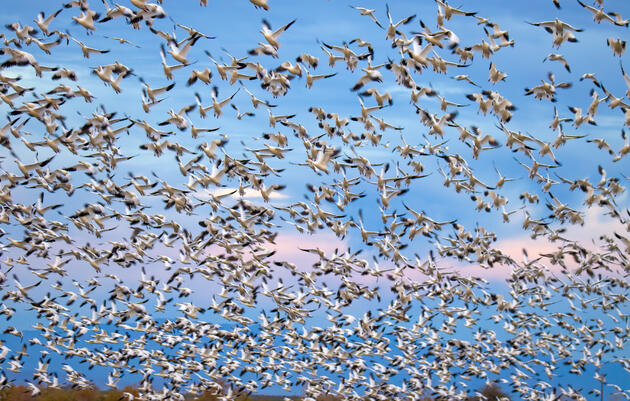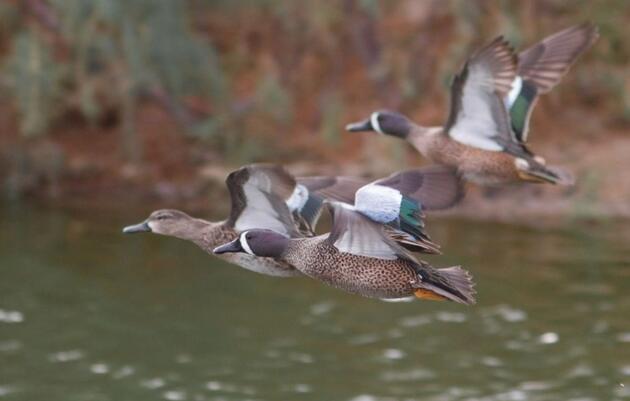
If it wasn’t for the sun low on the horizon or the sparrows singing quickly from nearby shrubs, one would barely realize it was morning. The heat along the Salton Sea, with some added humidity, already felt slightly oppressive. Our shorebird survey route included the shoreline along the State of California’s Species Conservation Habitat (SCH) 4,100 acre wetland remediation project on the southwest corner of the Sea, near the New River mouth. We found ourselves in a construction site, and after asking for access permission, were given hard hats and sent along our way to navigate a series of levees and dirt roads and look for birds.
It’s been 30 years since the last region-wide surveys for shorebirds in the Intermountain West, the mostly arid region between the Rockies and the Sierra, home to large, saline bodies of water including Great Salt Lake. National Audubon Society, in partnership with Point Blue Conservation Science, the US Fish & Wildlife Service, and state agency partners embarked on an effort this past August to resurvey freshwater wetlands and saline lakes across 11 states in the Intermountain West. The project’s goals are to complete a comprehensive surveys of wetland sites over the next 3 to 5 years, compare current distributions to historic surveys, and identify environmental- and human-related factors driving shorebird distributions.

The Salton Sea is part of this effort, and a group of us set out to the Sea for shorebirds, section by section, on one hot August morning this summer. My group consisted of myself, Audubon’s Salton Sea Program Coordinator Camila Bautista, and Trevor Wimmer, Salton Sea bird survey contractor. Knowing that the temperatures would climb to or above 100 degrees, we started our survey at sunrise, when the temperature was already in the mid 80’s.
Despite the heat, an occasional noisy truck passing by, and the sweat dripping down my face from the hard hat, the view of shorebirds and many other species of waterbirds was hard to beat. The shorebirds didn’t seem to mind the heat or noise, either! We were pleasantly surprised to find ourselves counting thousands upon thousands of Black-necked Stilts, Long-billed Curlews, Least and Western Sandpipers and smaller but still significant numbers of Black-bellied and Snowy Plovers, Marbled Godwits, and less common Stilt Sandpipers. Among the shorebirds picking in the mud along the Sea’s edge were large groups of hundreds of Red-necked Phalaropes, shorebirds that spin in circles to churn up the water to reveal tasty morsels. These unusual shorebirds stop at saline lakes across the west before spending the winter out on the open oceans. The mudflats and shoreline were full of shorebirds in all directions, as far as the heat haze would allow our spotting scopes to see. The air was full of Black Terns, a beautifully elegant, little black and grey seabird that stops at the Sea post breeding before continuing its migratory journey for the winter to the Pacific Coast of Central and South America.
We poked our way along the edges of the Sea and construction zone, using our vehicle as the only shade in slight. In front of us, birds ringed the Sea, and behind us, trucks were working around the clock moving dirt in an endless maze of dirt roads and dirt pond bottoms, that, once flooded, would become future wetlands. I was relieved to still see so many birds still at the Sea, and wanted to assure them, if they could hear me, that when they come back in a year they will have so much additional new habitat to use as the Sea continues to recede. The SCH project is scheduled for completion fall of 2023, providing new habitats for waterbirds to help replace so much of what has been lost. Flooding this area will also help alleviate dust blown off the exposed lakebed.
The Salton Sea is an integral part of the migratory journey of so many species of waterbirds, and visiting the Sea during migration allowed me to see that shorebirds are still able to feed along the Sea’s muddy shoreline. It also gave me a first-hand look at the state’s progress on completing the first big wetland habitat project at the Sea. I look forward to returning next year to observe how birds make use of the new habitats being constructed. This month’s International Migratory Bird Day highlights the significant treks shorebirds take and how important it is for us to be stewards of their long journeys, ensuring that there is safety, food, shelter and water, every step along the way. To learn more about shorebird migration, visit Audubon’s new Bird Migration Explorer.
By Andrea Jones
Monthly Giving
Our monthly giving program offers the peace of mind that you’re doing your part every day.







